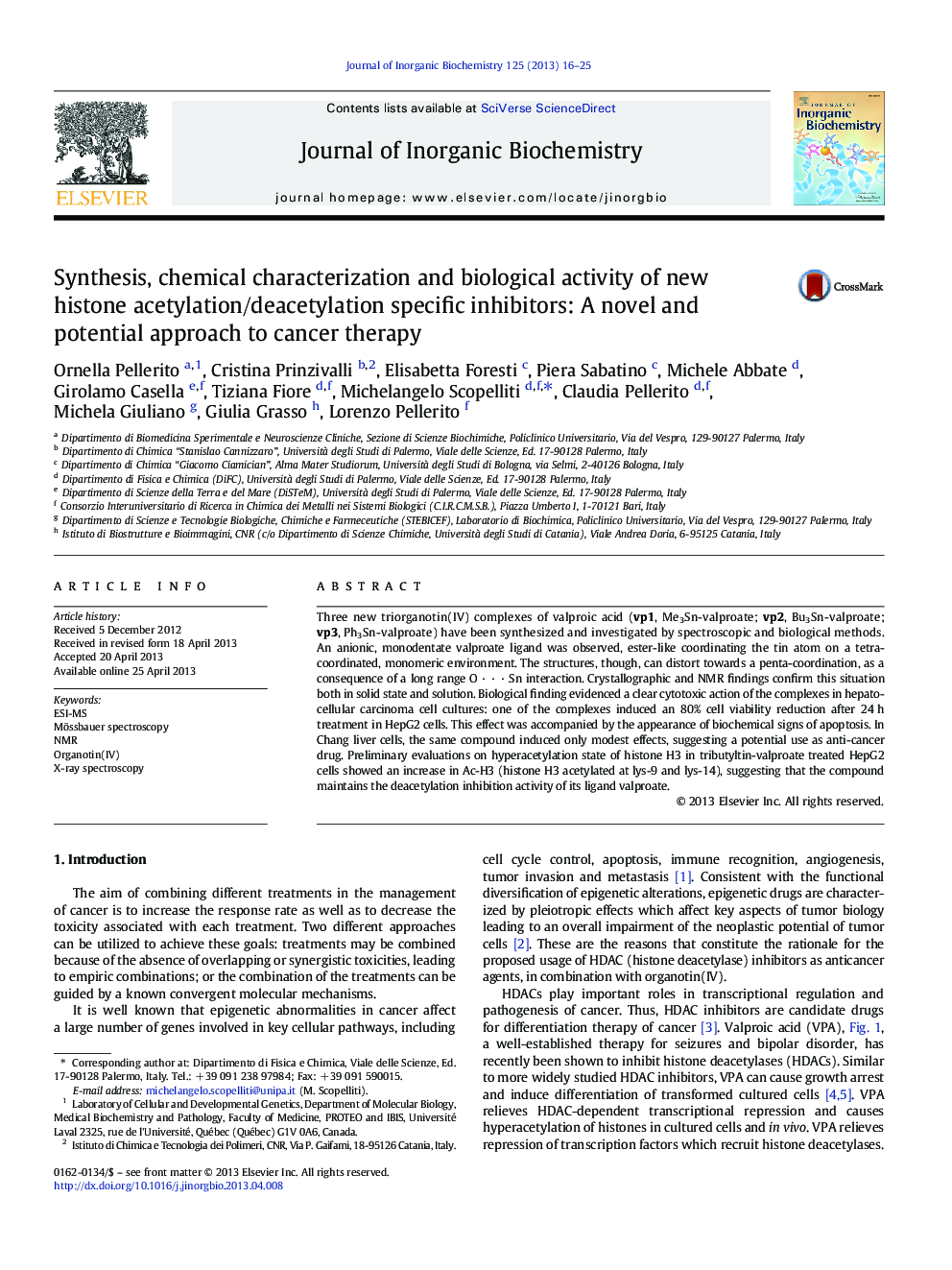| Article ID | Journal | Published Year | Pages | File Type |
|---|---|---|---|---|
| 1317592 | Journal of Inorganic Biochemistry | 2013 | 10 Pages |
•New triorganotin(IV)valproate complexes are reported.•A crystallographic report of one of the complexes is included.•Bu3Sn(IV)valproate inhibits selectively histone deacetylase in HepG2 cells.•Specific inhibition could be a base for a new cancer therapy approach.
Three new triorganotin(IV) complexes of valproic acid (vp1, Me3Sn-valproate; vp2, Bu3Sn-valproate; vp3, Ph3Sn-valproate) have been synthesized and investigated by spectroscopic and biological methods. An anionic, monodentate valproate ligand was observed, ester-like coordinating the tin atom on a tetra-coordinated, monomeric environment. The structures, though, can distort towards a penta-coordination, as a consequence of a long range O · · · Sn interaction. Crystallographic and NMR findings confirm this situation both in solid state and solution. Biological finding evidenced a clear cytotoxic action of the complexes in hepatocellular carcinoma cell cultures: one of the complexes induced an 80% cell viability reduction after 24 h treatment in HepG2 cells. This effect was accompanied by the appearance of biochemical signs of apoptosis. In Chang liver cells, the same compound induced only modest effects, suggesting a potential use as anti-cancer drug. Preliminary evaluations on hyperacetylation state of histone H3 in tributyltin-valproate treated HepG2 cells showed an increase in Ac-H3 (histone H3 acetylated at lys-9 and lys-14), suggesting that the compound maintains the deacetylation inhibition activity of its ligand valproate.
Graphical abstractNew organotin(IV)-valproate complexes show specific inhibition of histone deacetylase in hepatic tumor cellsFigure optionsDownload full-size imageDownload as PowerPoint slide
